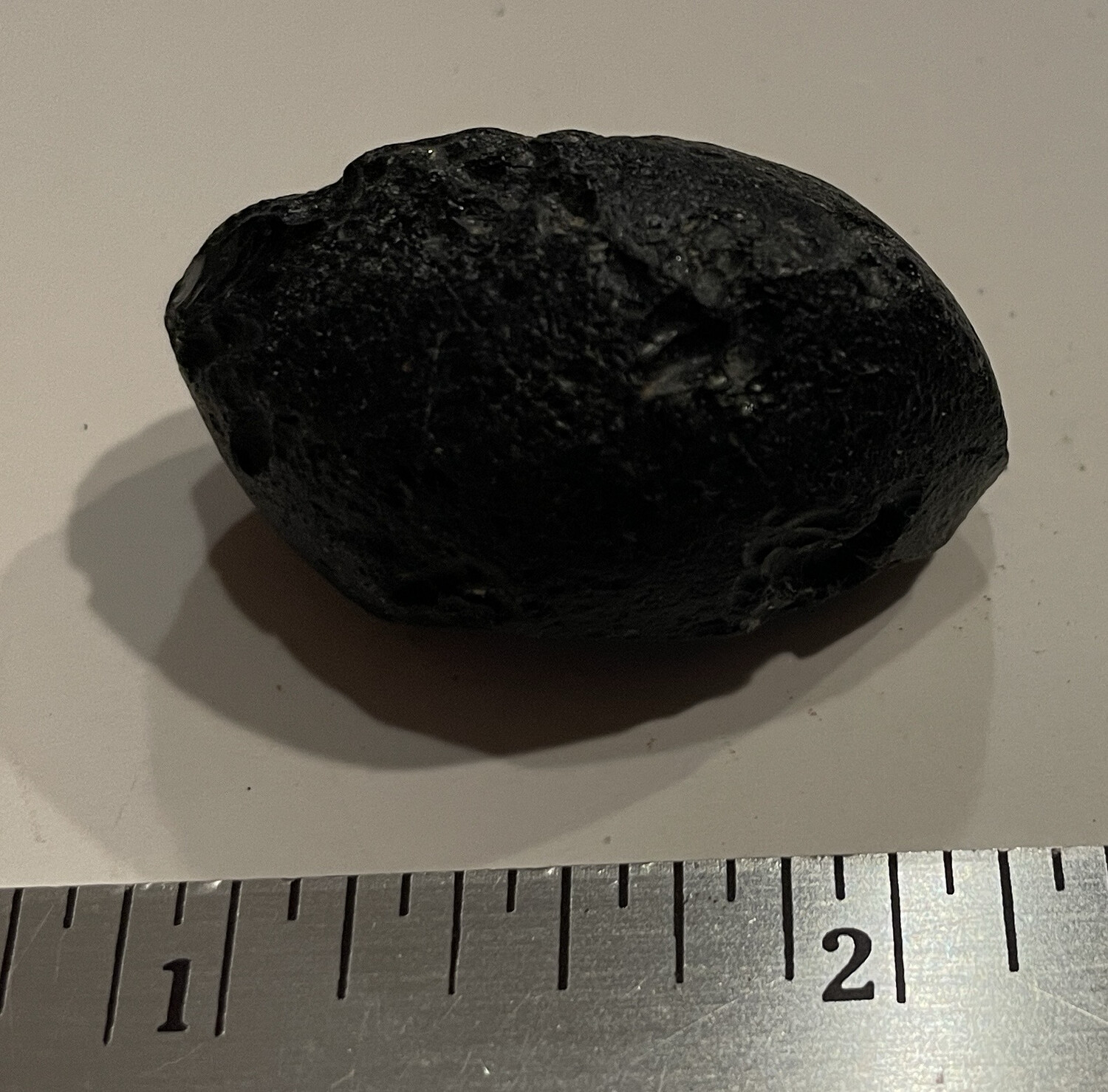
Indochinite Tektite Meteorite 16 Grams - Vietnam
Tektite come in many shapes, sizes, and colors. The most desirable are deep green and are particularly known to come from Moldova, hence the name Moldavite. My examples are black and have been harvested in Vietnam. Tektites form when silicates are super-heated in meteor fall. Various theories have been formulated to explain them from volcanoes on the moon to terrestrial silicates melted on impact. Their lack of moisture and general purity suggest they are formed during an atmospheric fall.
Moldavite (Czech: vltavín) is a forest green, olive green or blue greenish vitreous silica projectile glass formed by a meteorite impact in southern Germany (Nördlinger Ries Crater) that occurred about fifteen million years ago. It is considered a gemstone.
Although tektites are superficially similar to some terrestrial volcanic glasses (obsidians), they have unusual distinctive physical characteristics that distinguish them from such glasses. First, they are completely glassy and lack any microlites or phenocrysts, unlike terrestrial volcanic glasses. Second, although high in silica (>65 wt%), the bulk chemical and isotopic composition of tektites is closer to those of shales and similar sedimentary rocks and quite different from the bulk chemical and isotopic composition of terrestrial volcanic glasses. Third, tektites contain virtually no water (<0.02 wt%), unlike terrestrial volcanic glasses. Fourth, the flow-banding within tektites often contains particles and bands of lechatelierite, which are not found in terrestrial volcanic glasses. Finally, a few tektites contain partly melted inclusions of shocked and unshocked mineral grains, i.e. quartz, apatite, and zircon, as well as coesite.
Control number 20100529009.
